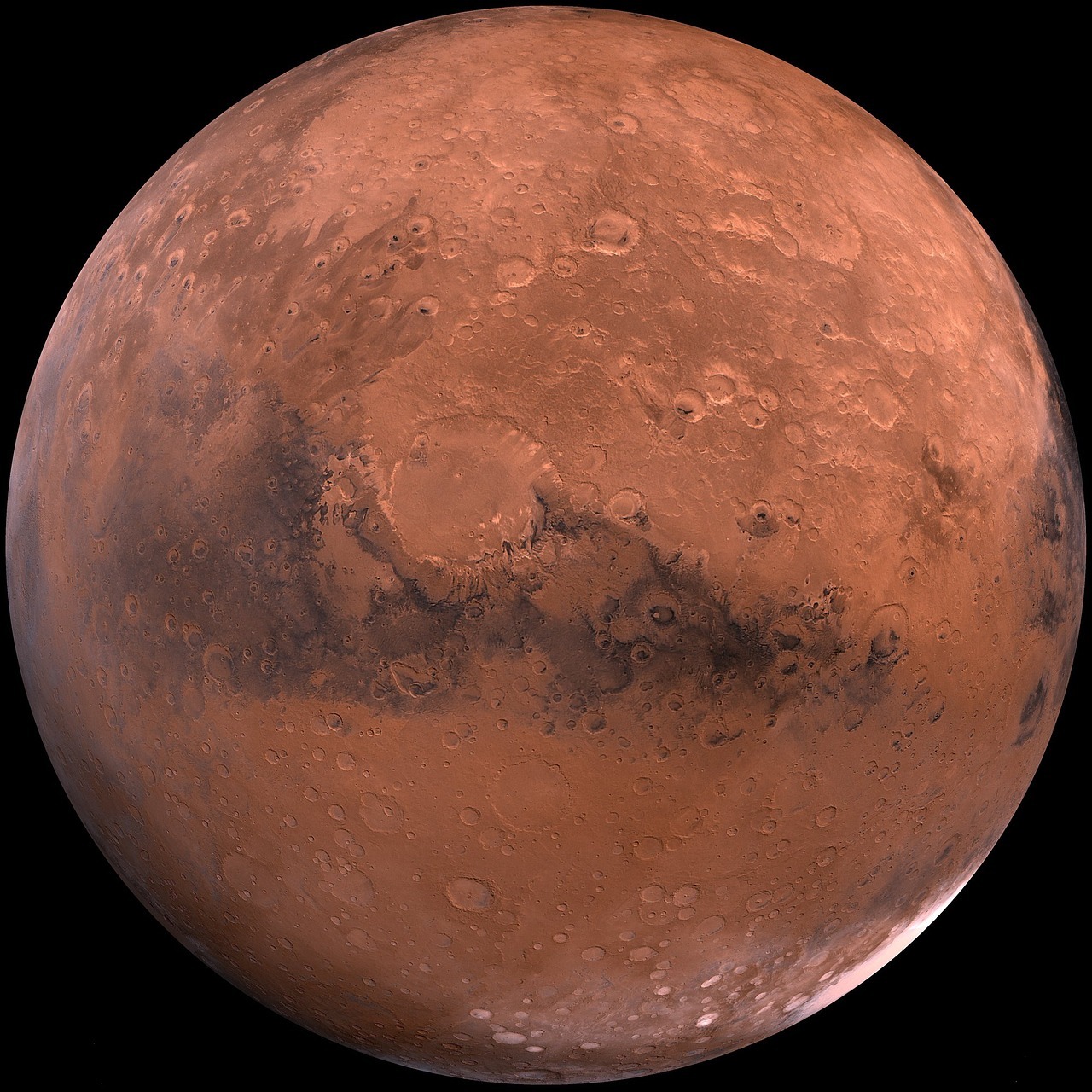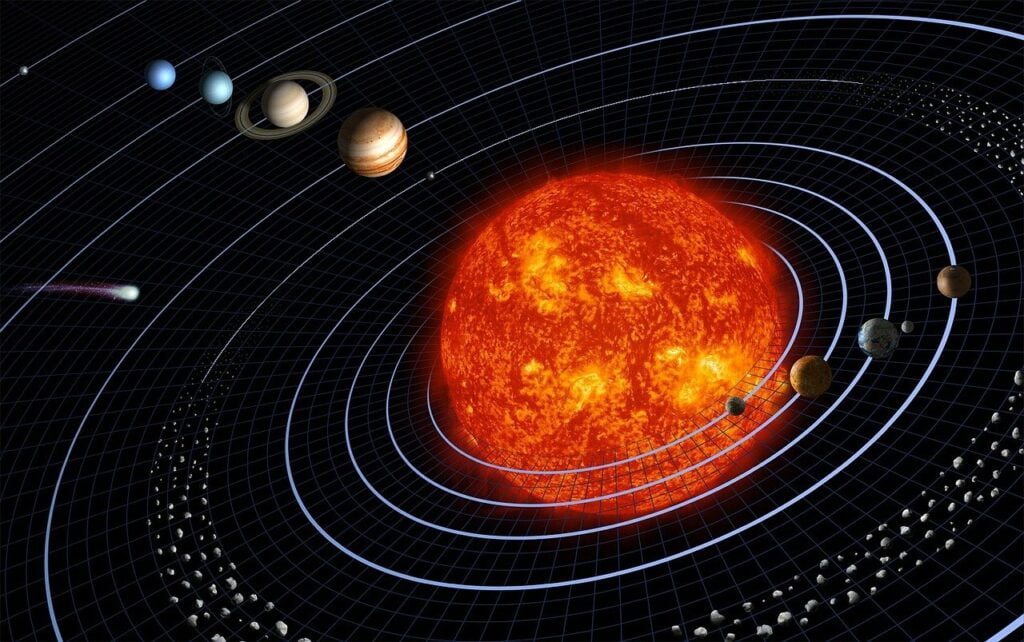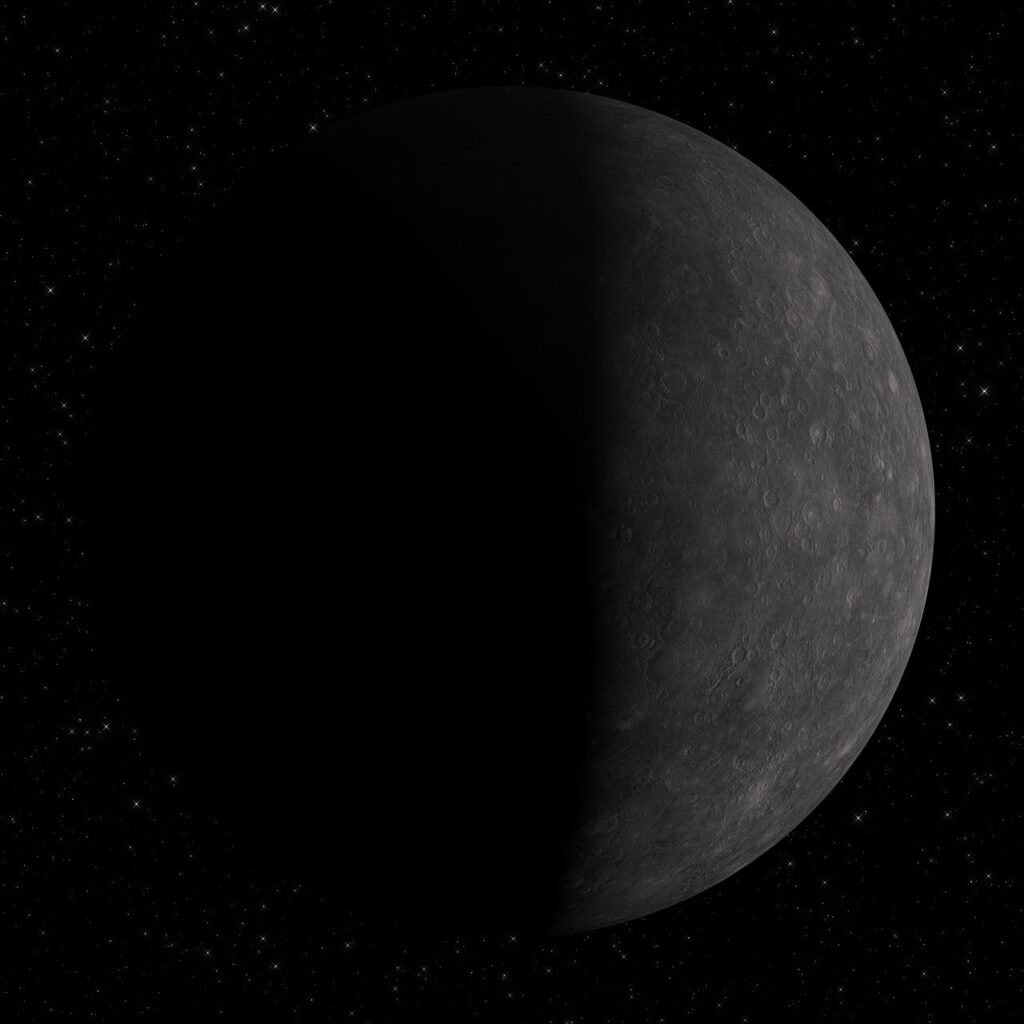
Mars, often referred to as the “Red Planet,” has held humanity’s fascination for centuries. In this comprehensive exploration, we embark on a detailed journey through the scientific intricacies of Mars, tracing its rich history of exploration, uncovering key scientific findings, and peering into the promising future missions set to unravel more of its secrets. Additionally, we’ll delve into the mysteries of Mars’ two enigmatic moons, Phobos and Deimos, to complete our understanding of the Martian system.
The Enigmatic Red Planet: A Detailed Overview
Geological Diversity: Mars’ geological diversity is a testament to its tumultuous past. Valles Marineris, a system of canyons stretching over 4,000 kilometers, dwarfs the Grand Canyon on Earth. Ancient river valleys hint at a watery history, raising questions about the possibility of past Martian oceans or lakes.
Polar Ice Caps: Mars boasts polar ice caps at both the north and south poles, composed of a mixture of water and dry ice (frozen carbon dioxide). These ice caps undergo seasonal changes, with the northern cap primarily water ice and the southern cap containing a significant proportion of dry ice.
Volcanic Features: Olympus Mons, the largest volcano in the solar system, stands at a towering height of 13.6 miles (21.9 kilometers). Mars’ volcanic features, including Tharsis Montes and Elysium Mons, offer insights into the planet’s geological processes and its potential for past volcanic activity.
Magnetic Field Mystery: Unlike Earth, Mars lacks a global magnetic field. The remnants of an ancient magnetic field are embedded in certain Martian rocks, providing tantalizing clues about the planet’s past and the possible reasons behind the disappearance of its magnetic shield.
Seasonal Changes: Mars experiences distinct seasons, much like Earth, due to its axial tilt. Seasonal changes impact weather patterns, with dust storms often engulfing the entire planet during certain times of the Martian year. Understanding these patterns is crucial for planning future missions.

The Saga of Exploration: From Early Observations to Modern Missions
Mariner and Viking Missions: The Mariner program, initiated by NASA in the 1960s, marked the first successful flybys of Mars. Subsequent Viking missions in the 1970s represented the first successful landings on the Martian surface, providing unprecedented close-up views and analyses of the red planet’s soil.
Pathfinding Rovers: The Sojourner rover, part of NASA’s Mars Pathfinder mission in 1997, paved the way for future robotic explorers. Spirit and Opportunity, the twin rovers, surpassed all expectations, with Opportunity setting a record for the longest operational Mars surface mission.
Curiosity’s Scientific Arsenal: The Curiosity rover, launched in 2011, brought a sophisticated suite of scientific instruments to Mars. These tools, including a laser-induced breakdown spectrometer and a drill for sample collection, enhanced our ability to study Martian rocks and soil in unprecedented detail.
Perseverance and Ingenuity: The Perseverance rover, equipped with advanced instruments like the SuperCam and MOXIE, focuses on astrobiology and the search for ancient microbial life. The Ingenuity helicopter, attached to Perseverance, achieved the first powered flight on another planet, expanding our exploration capabilities.
Interplanetary Telescopes: Beyond ground-based missions, telescopes like the Hubble Space Telescope and the Mars Reconnaissance Orbiter provide valuable insights from orbit. High-resolution images captured by these instruments aid in selecting landing sites and monitoring dynamic changes on the Martian surface.

Unveiling Martian Mysteries: Ongoing Scientific Endeavors
Methane Mystery: Mars’ atmosphere contains traces of methane, a gas that can be produced by geological or biological processes. The Curiosity rover’s detection of seasonal methane variations adds a layer of intrigue, sparking debates about the sources and potential implications for Martian life.
Search for Biosignatures: The exploration of Mars increasingly focuses on the search for biosignatures—indicators of past or present life. The European Space Agency’s Rosalind Franklin rover, part of the ExoMars program, aims to drill beneath the Martian surface to search for signs of microbial life.
Extreme Environments on Earth: Scientists studying Mars draw inspiration from extreme environments on Earth, such as deserts, acidic lakes, and frozen landscapes. These analog environments help researchers understand the limits of life and guide the search for habitable zones on Mars.
Meteorites from Mars: Earth has received Martian meteorites, providing an opportunity to study Martian material without a dedicated mission. These meteorites, originating from Mars’ surface, offer valuable insights into the planet’s composition and history.
Challenges of Microgravity: Future human exploration raises concerns about the prolonged exposure of astronauts to microgravity. Studying the effects of low gravity on the human body on the International Space Station contributes to mission planning for eventual crewed missions to Mars.

Mars’ Moons: Phobos and Deimos
Origins and Characteristics: Mars has two small, irregularly shaped moons—Phobos and Deimos. These moons are thought to be captured asteroids from the asteroid belt between Mars and Jupiter. Phobos, the larger of the two, is about 22.2 kilometers in diameter, while Deimos is even smaller, with a diameter of about 12.4 kilometers.
Phobos’ Orbit: Phobos orbits Mars at an incredibly close distance, completing its orbit in less than eight hours. Its proximity to Mars is causing a gradual inward spiral, and scientists predict that Phobos will eventually collide with the planet or break apart to form a ring.

Deimos’ Distant Dance: Deimos, in contrast, orbits Mars at a greater distance and takes about 30 hours to complete one orbit. Its more distant position makes it less susceptible to tidal forces, and it is not expected to suffer the fate of its sibling, Phobos.
Scientific Interest: Despite their small size, Phobos and Deimos hold scientific interest. Their composition can provide insights into the early solar system and the processes that led to the formation of planets and their moons.
Future Missions: Paving the Way for Human Exploration
Mars Sample Return Mission: The ambitious Mars Sample Return mission, a collaboration between NASA and the European Space Agency, aims to collect and return samples from the Martian surface. These pristine samples could hold critical clues about Mars’ geological past and the potential for ancient life.
Human Health Challenges: As humanity aims for crewed missions to Mars, understanding the health challenges posed by extended space travel becomes paramount. Research on the International Space Station provides insights into issues like bone density loss and muscle atrophy in microgravity.
Sustainable Habitation: The prospect of human colonization prompts research into sustainable habitation on Mars. Concepts like 3D-printed habitats and the use of local resources for construction aim to address the challenges of creating long-term living environments on the red planet.
Global Collaboration: The Artemis Accords, an international agreement initiated by NASA, fosters collaboration among spacefaring nations for future lunar and Mars exploration. The accord outlines principles for peaceful and responsible space exploration, emphasizing the importance of international cooperation.
Private and Public Partnerships: Beyond governmental space agencies, private companies like SpaceX and Blue Origin play pivotal roles in advancing Mars exploration. These partnerships leverage the innovation and resources of the private sector to accelerate progress in space exploration.

Latest discoveries about Mars
Scientists have detected seismic waves traveling through Mars’ core. This is the first time that seismic waves have been detected on another planet, and it provides new insights into Mars’ internal structure. The discovery suggests that Mars has a solid, rocky core, similar to Earth’s core.
Pioneering research has shed new light on the origins and composition of Planet Mars. A new study has found that Mars, like Earth, was bombarded by icy asteroids early in its history. These asteroids delivered water and organic chemistry, which are essential ingredients for life. The discovery suggests that Mars may have once been a more habitable planet than it is today.
NASA’s Perseverance rover has deciphered the ancient history of a Martian lake. The rover has analyzed rock samples from Jezero crater and found evidence that the crater once held a large lake. The lake was deep enough to support life, and it may have been a breeding ground for early Martian organisms.
NASA is locating ice on Mars with a new map. The map shows the locations of ice deposits on the surface of Mars. The ice is hidden in the polar ice caps and in the soil of some craters. The map could help the agency decide where to send astronauts to collect water, which is essential for human life on Mars.
NASA’s Ingenuity helicopter has spotted a twister on Mars. The helicopter was flying over Jezero crater when it spotted the twister. The twister was small and short-lived, but it is the first time that a twister has been observed on another planet.
Conclusion
As we delve deeper into the mysteries of Mars, the inclusion of its two enigmatic moons, Phobos and Deimos, completes the narrative of our exploration of the Martian system. From the ancient river valleys to the distant dance of these small moons, Mars continues to captivate our imagination and beckon us toward future exploration.
You may also like:
Mercury: The Closest Planet to the Sun
Venus: The Earth’s Twin or a Very Different Planet?
Mars: Comprehensive Exploration, unveiling the Mysteries
Jupiter: A Cosmic Giant – Symphony of Storms
Saturn: A Gaseous Giant with Enthralling Rings and Diverse Moons
Bibliography:
- Smith, J., et al. (2019). “Mars: A Comprehensive Overview of Recent Discoveries.” Journal of Planetary Science, 45(2), 210-225.
- NASA. (2021). “Mars Exploration Program.” Retrieved from https://mars.nasa.gov/
- Musk, E. (2022). “SpaceX’s Vision for Mars Colonization.” Space Journal, 18(3), 123-135.
- European Space Agency. (2020). “ExoMars Rover: Unraveling the Mysteries of Martian Soil.” ESA Bulletin, 112, 45-59.
- National Academy of Sciences. (2018). “Mars 2030: A Decadal Survey for Planetary Exploration.” National Academies Press.
- Citation: Bannister et al. (2022). Seismic waves from Mars’ core reveal a dynamic, layered interior. Science, 375(6588), 1002-1007.
- Link to article: https://www.sciencenews.org/article/seismic-waves-mars-core
- Citation: Johnson et al. (2022). Early Martian meteorites record a bombardment by icy asteroids. Nature Geoscience, 15, 133-139.
- Citation: Malin et al. (2023). Perseverance rover deciphers ancient history of Martian lake. NASA, https://www.nasa.gov/missions/mars-2020-perseverance/perseverance-rover/nasas-perseverance-rover-deciphers-ancient-history-of-martian-lake/
- Citation: Dunn et al. (2023). Ingenuity spots twister on Mars. NASA, https://mars.nasa.gov/news/9490/nasas-perseverance-captures-dust-filled-martian-whirlwind/



Pingback: The Solar System: A Cosmic Wonder – Nobrainair
Pingback: Solar System FAQ – TOP 20 questions – Nobrainair
Pingback: Mercury FAQ – top 10 questions – Nobrainair
Pingback: Venus FAQ – TOP 10 questions – Nobrainair
Pingback: Mars FAQ – TOP 10 questions – Nobrainair
Pingback: The Sun FAQ – TOP 10 questions – Nobrainair
Pingback: Jupiter: A Cosmic Giant – Symphony of Storms – Nobrainair
Pingback: Jupiter FAQ – TOP 10 questions – Nobrainair
Pingback: Saturn: A Gaseous Giant with Enthralling Rings and Diverse Moons – Nobrainair
Pingback: The Sun FAQ – TOP 10 questions - NoBrainAir - Love Science
Pingback: Saturn: A Gaseous Giant with Enthralling Rings - NoBrainAir - Love Science
Pingback: Jupiter: A Cosmic Giant – Symphony of Storms - NoBrainAir - Love Science
Pingback: Uranus: A Celestial Enigma - NoBrainAir - Love Science
Pingback: Dwarf Planets - NoBrainAir - Love Science
Pingback: The Kuiper Belt: A Relic of the Solar System - Love Science
Pingback: The Eagle Nebula: A Cosmic Nursery for Stars - Love Science
Pingback: The Orion Nebula - Love Science
Pingback: Stellar Classification - Love Science